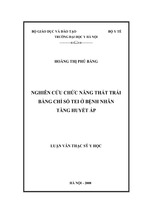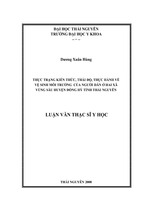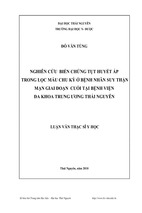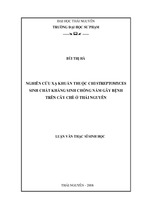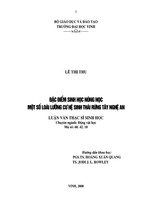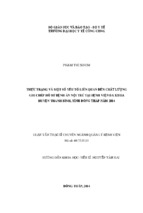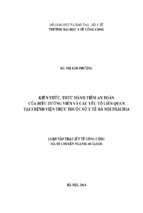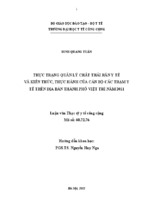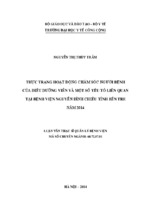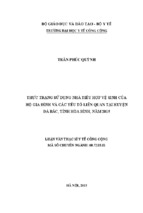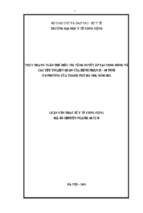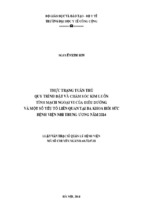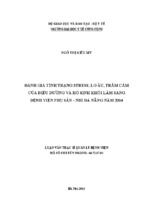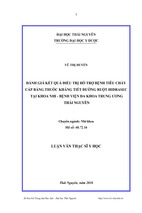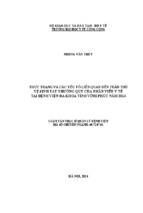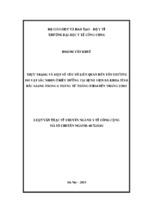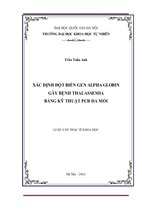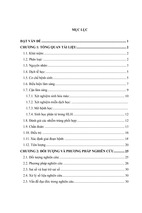The Double Account System in Nineteenth Century U.K. Railways: An Analysis
from an Accounting Theory Perspective
By
Christopher John Williams
B.Bus (Accounting) RMIT
Graduate Certificate in Tertiary Teaching and Learning, RMIT University
A THESIS SUBMITTED FOR THE DEGREE OF ‘MASTER OF BUSINESS’ IN THE SCHOOL OF
ACCOUNTING OF RMIT UNIVERSITY, MELBOURNE, AUSTRALIA
March 2014
i
DECLARATION BY CANDIDATE
I, Christopher John Williams, declare that:
a) Except where due acknowledgement has been made, this thesis is mine alone;
b) This work has not been submitted previously, in whole or in part, to qualify for any
other academic award;
c) The content of this thesis is the result of work which has been carried out since the
official commencement date of the approved research program;
d) No editorial work, paid or unpaid, has been carried out by a third party and
e) Ethics procedures and guidelines have been followed.
Christopher John Williams
ii
Acknowledgements
This work has been carried out with the assistance, guidance, support and comment from
several people. The following deserve particular acknowledgement.
Professor Emeritus Max Aiken, my senior supervisor until his retirement, for his advice,
guidance and inspiration and what he taught me about being an academic.
Professor Emeritus Sheila Bellamy, my senior supervisor after the retirement of Professor
Aiken, until her retirement, for advice, patience, encouragement and guidance.
Associate Professor Kevin Adams, my senior supervisor subsequent to Professor Bellamy
until his retirement, for providing help and guidance during his very busy schedule.
Dr. Daryll Cahill, my second supervisor, for his advice, assistance, encouragement, humour
and advice on grammar.
Professor Steven Dellaportas, for his advice, guidance and encouragement.
Dr. Barry Hutton for his interest, encouragement, humour and his effort in obtaining old
British railway documents.
Nicolette Weber, for her encouraging conversations and one ‘nugget’ of advice.
Dr. Laura Maran, for encouragement when I really needed it.
This thesis is dedicated to my son, Duncan.
iii
TABLE OF CONTENTS
Abstract
Ch. 1
1
Introduction
2
1.1 Background to the Problem
2
1.1.1
The Industrial Revolution
2
1.1.2
Before the Railway System
2
1.1.3
The Coming of the Railways
3
1.1.4
The Collapse of the Railways
4
1.1.5
The Double Account System
6
1.2 Research Problem and Objectives
6
1.2.1
The Theory/History Linkage
7
1.2.2
The Double Account System
7
1.2.3
Relating Theories to History
8
1.2.4
Summary
9
Research Objectives
9
Research Questions
9
1.3 Motivation for and Significance of the Study
9
1.3.1
History and Theory
10
1.3.2
The Theories
10
1.3.3
Contribution of the Thesis
11
1.3.4
Counter Factual History?
11
1.3.5
Significance of the Thesis
12
iv
1.4 Summary
Ch. 2
Ch. 3
Ch. 4
13
Review of Literature
14
2.1 Introduction
14
2.2 Accounting History
15
2.3 Accounting Theory
21
2.3.1
Legitimacy Theory
22
2.3.2
Stakeholder Theory
23
2.3.3
Institutional Theory
24
2.4 Accounting as a Social Instrument
25
2.5 Summary
27
Accounting as a Social Instrument
29
3.1 Introduction
29
3.2 Before the Industrial Revolution
29
3.3 The Industrial Revolution
31
3.4 Social Aspects of Accounting
32
3.5 Summary
33
The Double Account System
35
4.1 Introduction
35
4.2 The Canal and Railway Companies
36
4.2.1
The Canal Companies
36
4.2.2
The Railway Companies
38
4.3 The Need for Reporting on Stewardship
39
4.4 Characteristics of the Double Account System
40
4.5 Why Have the Double Account System?
43
v
4.6 Did the Double Account System Achieve its Aims?
44
4.7 Summary
48
Ch. 5
Systems Oriented Accounting Theories
51
5.1 Introduction
51
5.2 Why 'Systems Oriented'?
51
5.2.1
Systems Thinking and General Systems Theory
53
5.2.2
Relevance to Accounting Theories
54
5.3 Accounting Thoeries
55
5.3.1
Legitimacy Theory
55
5.3.2
Stakeholder Theory
63
5.3.3
Institutional Theory
65
5.4 Summary
Ch. 6
71
Summary and Conclusion
73
6.1 Summary
73
6.2 Limitations of the Study
76
6.3 Conclusion
77
Appendix One
78
References
80
vi
The Double Account System in Nineteenth Century U.K. Railways: An Analysis
from an Accounting Theory Perspective
Abstract
This thesis investigates the extent to which our knowledge of modern systems oriented
accounting theories can explain the shortcomings in nineteenth century financial reporting
as carried out by the railway companies. The work is not intended to be a thesis on history.
Nor is it a thesis on accounting theories. Rather, the work looks at historical events from the
perspective of a modern accountant. The two main questions addressed by the thesis are
whether it is feasible to use modern systems oriented accounting theories to investigate
and explain the historical events covered in this study and whether the Double Account
System achieved its aims. The paper contains a brief outline of the development and
collapse of the UK railway companies in the mid-nineteenth century. The paper then
considers the purpose of accounting and whether it is merely a measuring tool or a social
instrument. The place of accounting within the social context is considered and concludes
that accounting has developed into a social instrument. The work then examines the railway
companies’ accounting system, The Double Account System. The paper looks at the origin
and development of the system and explains its workings. As part of this investigation the
paper considers the aims of the Double Account System and considers whether the system
achieved its aims or not. The thesis then examines three accounting theories that have been
called system oriented theories and relates the concepts in the theories to the accounting
reports of the nineteenth century railway companies in the United Kingdom. The theories
examined are Legitimacy Theory, Stakeholder Theory and Institutional Theory. The paper
concludes that it is feasible to use modern systems oriented accounting theories to
investigate and explain the historical events covered in the study. The work also concludes
that the Double Account System did achieve what it was meant to achieve but that the aims
of the system were limited, especially when viewed through the lens of modern accounting
theories and concepts.
1
Chapter 1: Introduction
The purpose of this chapter is to give an outline of the thesis.
It provides an outline of the problem to be examined, states the research objectives and
research questions and provides the motivation for and significance of the study.
1.1 Background to the Problem
1.1.1 The Industrial Revolution
The Industrial Revolution had no specific beginning date but began its evolution during the
second half of the eighteenth century. It was a time when Britain gradually moved from being
an agricultural, manual labour economy to one in which machinery was becoming a major
means of production. This change resulted in not only an expanding middle class but also a
greater need for basic minerals and metals such as iron and coal, a need which grew
commensurate with the rapid increase in output generated by the machinery (Montagna 1981).
1.1.2 Before the Railway System
Moving this iron and coal around Britain was difficult because the roads in the 18th century
were not paved. This made the transportation of heavy loads an onerous task, especially in
wet weather. An answer to this problem was the construction of canals, which became the
liquid highways of the early Industrial Revolution (Montagna 1981).
The Bridgewater Canal has been described as Britain’s first canal. The first section was
opened on 17th July 1761 to carry the coal from a mine owned by The Duke of Bridgewater
(London Canal Museum)
The Duke had introduced a Private Bill to Parliament in 1759 enabling him to raise the capital
needed to acquire land and construct the canal.1 Further Bills were introduced to Parliament to
extend the scheme and by the time of its completion in 1776 it had become the first of many
canals built in Britain by the end of the century (London Canal Museum).
1
A Private Bill is one introduced to the Parliament of Britain by an individual MP. Such a Bill is meant to
secure powers for an individual or organization above the general law. For example, the Private Bill introduced
by the Duke of Bridgewater sought the power to obtain land to be used in the construction of the Bridgewater
Canal. This is not to be confused with a Private Member’s Bill which is introduced to Parliament by an
individual MP with the intention that the resultant Act will apply to the society as a whole.
2
1.1.3 The Coming of the Railways
By the turn of the nineteenth century, the demand for coal in Britain was so great that it could
not be met by the canal system of transportation. Coal production had grown from a little over
two million tons per annum at the turn of the century to more than fifteen million tons per
annum by 1829 (Montagna 1981). However, it was not until 1804 that Cornish mining
engineer Richard Trevithick developed a steam powered locomotive.2 Trevithick’s machines
were used to haul coal from mines. Montagna states that prior to this coal was, firstly, moved
by human muscle power by hauling baskets of coal along horizontal tunnels then up a vertical
shaft. Later the horizontal movement through tunnels was speeded up by using ponies and
carts on rails. Still later, tramways using cast iron rails were used in several British mines. By
1800 more than two hundred miles of tramway were in use in coal mines (Montagna 1981).
The Stockton and Darlington Railway, which opened in 1825, was the first line to carry both
freight and passengers. Prior to that, railways, powered by horses, were only used to carry
freight. These railways were called Tramways and by 1800 approximately two hundred miles
of tramway track serviced coal mines (Montagna 1981).
In 1829 the Liverpool and Manchester Railway Company conducted the ‘Rainhill Trials’ with
the aim of finding the best locomotive design of the day. ‘The Rocket’, designed by the
English civil and mechanical engineer George Stephenson, assisted by his son Robert and
Henry Booth, won the Trials and revolutionised steam powered locomotion.
The Liverpool and Manchester Railway began in 1830 with a forty-mile track connecting the
cities; by 1841 there were 1,300 miles (2,080 kms.) of track in Britain. By 1852 there were
approximately 7,000 miles (11,200 kms.) of track (Edwards 1985; Montagna 1981).
The creation and running of the railways was left by the conservative government of the day
to the private sector. This idea was in line with the laissez faire economic theory originating
in France in the eighteenth century with The Physiocrats, French economists who opposed the
policy of Jean-Baptiste Colbert (1619-1683) the French controller-general of finance under
Louis XIV. Colbert’s aim was to micro-manage the French economy so as to accumulate as
much gold as possible for the national treasury and control overseas trade (Dewberry 2012).
The argument of The Physiocrats was, inter alia, that the imposition of tariffs and close
2
The principles of steam power had been known since ancient times. The Greek mathematician and engineer,
Hero of Alexander (c10AD – 70AD) described the Aeolipile, the first recorded steam engine. The Roman
architect Vitruvius mentioned the use of the Aeolipile approximately one hundred years earlier in his treatise on
Latin and Greek architecture, “De Architectura” now known as “The Ten Books of Architecture”
3
regulation of the economy inhibited the growth of agriculture and industry (Dewberry 2012).
This argument was supported by Adam Smith in his 1776 work, ‘The Wealth of Nations’
(Smith 1784).
Smith discusses the expenses of a sovereign or commonwealth In Book V of his work. These
expenses are:
1. expenditure in relation to defence of the realm;
2. expenditure in relating to the administration of justice;
3. expenditure on public works and institutions that would not be carried out by an
individual because no profit could be made in the endeavour and
4. the expense of supporting the dignity of the sovereign (i.e. expenses of running the
court).
Under laissez faire thinking the government would best serve the economy by restricting its
expenditure to those areas listed above.
The ideas put forward by Smith (1784) constituted the prevailing economic thought among
the business community and other educated people for the next one hundred years or so after
the publication of ‘The Wealth of Nations’.
As private rather than government ventures, the first rail companies were each incorporated
by their own Act of parliament; they were, in effect, public companies formed by Private
Bills, as had been the case with the canal companies.
1.1.4 Collapse of the Railways
Moving goods around Britain during a period of high economic activity, these companies
appear prima facie to have represented sound investments—yet in the mid-nineteenth century
they began to collapse.
Odlyzko (2010) states that there is a notable lack of historical material written about the cause
of this collapse, beginning in 1847, especially when compared to other economic failures such
as The Tulip Mania of 1636, economic panics of 1819, 1825 and 1837 or the Wall Street
Crash of 1929.
Campbell (2009) points out that the investors of the day were unable to predict the Irish
famine or the Commercial Crisis of 1847 and in the same way would not have been able to
predict the fall of the railways. Campbell also performed a series of econometric tests
4
analysing the relationship between railway share prices and dividends from 1843 to 1850. He
found ‘a positive and significant relationship between the dividend paid by a company and the
share price at which it traded, through both the boom and bust in prices’ (Campbell, 2009,
p.3).
Campbell (2009) also indicates that it was the share price that followed the dividend. That is,
a higher dividend caused a rise in the share price. He also states that the railways had a
‘significantly lower dividend yield than non-railways, implying a relatively higher
price…between 1843 and 1846’ (p. 4). This lower yield, Campbell goes on to say, may be due
to ‘mispricing…or expectations of dividend growth’ (p. 4). He concludes that the dividend
did have a big influence on share prices but that investors ‘seem to have been unable to
forecast the longer-term dividend changes’ (p. 5).
Odlyzko (2010) however, brings up three important points that the average nineteenth century
investor, he argues, could not have known:
i.
In the mid 1840’s the number of miles of track authorized annually by the British
Parliament through the passing of Private Bills for the formation of rail companies
peaked at more than four thousand. (not all was built)
ii.
In 1847 annual investment in railway capital reached a peak of approximately £44
million.
iii.
Railway companies’ average share price index peaked in 1845; the index was
below 60 in 1830, was above 160 in the mid-1840s but by 1850 had dropped back
to its 1830 level.
The picture painted by Campbell’s article and Odlyzko’s book resembles what would now be
called a ‘bubble’ – high economic activity in anticipation of high returns on investment
(Campbell 2009, Odlyzko 2010). Odlyzko (2010) likens the passing of so many Private Bills
(see i above) with the number of IPOs during the Internet Bubble of the late 1990s in the
United States.
It is therefore arguable that the collapse of the nineteenth century railways was a bubble that
burst. The lack of literature on this topic, as stated by Odlyzko (2010), makes it difficult to
assess the reasons for the fall. In any case, this thesis is not an attempt to explain in detail why
these railway companies failed; rather it is an attempt at exploring the linkage between
modern accounting theories and history.
5
1.1.5 The Double Account System
The actual workings of this accounting system will be explained in chapter four. However, an
indication as to why it evolved as it did can be gleaned from the following.
The earliest Railway Act (1801) was in relation to the Surrey Iron Railway (Edwards 1985).
This railway was built from Wandswoth to Croydon and opened on 26 July 1803. It carried
only freight, no passengers and the carriages were pulled by horses, mules and donkeys
(Surrey Iron Railway).
The Act of 1801 decreed that the Surrey Iron Railway was to use all money raised by virtue of
the Act to pay all costs associated with the Act and any residue was to be appropriated to
purchasing land and making and maintaining the railway and other works and no other use
(Edwards 1985). This statutory requirement, with its stewardship emphasis, necessitated
appropriate financial reporting. This study will show that the Double Account System evolved
as a way of accounting for stewardship as required. However, while the notion of stewardship
may have been served well by the Double Account System, it may be argued that it
represented a narrow accountability framework in which other aspects of performance went
unreported or may have been given inadequate attention. (“Stewardship” and
“Accountability” will be discussed in chapter 4) For example, the railways were public
companies with shareholders requiring dividend returns on their investment. The calculation
of profit was therefore also of importance to the railway managers. However, it seems that
once the stewardship aspect of reporting was dealt with, the main emphasis of the financial
reports became the calculation of a distributable profit. While one may argue that this satisfies
the shareholders in the short term, this thesis will ask if this short term aspect of the reporting
became the biggest problem of the railways’ reports and that the thinking of the time
contributed little to overcome this problem.
1.2 Research Problem and Objectives
This section identifies the research problems to be explored in the thesis. It also describes the
objectives of the work. In order to meet these objectives certain questions must be addressed.
The section therefore states the research questions that this thesis will attempt to answer.
6
1.2.1 The Theory/History Linkage
This research involves an investigation into the collapse of the railway companies of
nineteenth century Britain from an accounting perspective.
Odlyzko (2010) states that there is a shortage of literature explaining, in detail, the cause(s) of
the collapse of British railways in the 1840s. The Literature Review in chapter two supports
this contention.
A consequence of this gap in the literature is that there is little (if any) work on examining the
linkage between modern system oriented accounting theories and the history in question.
The first objective of this thesis is, therefore, to fill the gap in the existing literature by
exploring the linkage, if any, between the modern theories and historical events.
To this end this thesis will explore whether or not certain modern accounting theories can be
used to identify and explain, either wholly or in part, the weaknesses and flaws in the
nineteenth century financial reporting by British railway companies. That is, it will consider
whether or not the prevailing thinking of the day was a large part of the problem and will
question whether modern accounting theories can be used to clarify why the nineteenth
century British railway companies failed in spite of a high level of economic activity in
Britain at that time.
The study will examine nineteenth century external financial reporting by railway companies.
To this end the thesis will examine the workings of the Double Account System as explained
by Edwards (1985), Dicksee (1976), Lee (1975) and Pollins (1991) and will consider whether
or not these reports were disclosing information that gave, or had the potential to give, a
warning of the financial troubles that beset the companies. If such disclosure is not found, the
research will look at what measures could have—and arguably should have—been adopted to
improve the usefulness of the reports. An example of a financial report prepared in
accordance with the Double Account System is shown in Appendix One of this thesis.
1.2.2 The Double Account System
The second objective of the study is to analyse the development by the railway companies of
the Double Account System.
The Double Account System will be examined in chapter three of this thesis to try to establish
whether the preparers of the reports viewed the railway companies as a way of generating
7
dividends or whether some other aim was intended. That is, did the reports merely calculate a
profit (hence potential dividends) or were the managers also interested in reporting to certain
parties on matters other than profit? That is, were they showing signs of going beyond the
mandatory reporting requirements that would be in the reports if they were acting in
accordance with the systems oriented accounting theories discussed in chapter five of this
thesis? Did the reports deal with the potential conflict that arises when private entities provide
public services? If so, how was this achieved? Also, to whom were the managers reporting?
In considering all this, the work will be attempting to answer the question of whether or not
the Double Account System achieved what it was meant to achieve. Chapter four of this thesis
will discuss the question of what the reporting arising from the Double Account System were
meant to achieve.
We cannot expect the directors of nineteenth century companies to be aware of accounting
theories from subsequent times. However, what we can do is look back on the history with
our awareness of accounting theories and, armed with this knowledge, see more clearly if
there were gaps in the railway companies’ reports and perhaps suggest reasons for these gaps.
Prima facie the Double Account System can be seen as a good system in that it did the job
that it was intended to do. But this is the conclusion that we come to if we look at the situation
with a narrow view. That is, if we only look at what the Double Account System was
designed to do and ask whether or not it achieved this purpose. This thesis argues that the
Double Account System was designed to meet legal requirements (Edwards 1975) and
disclose available profits to shareholders (Dicksee 1976, Lee 1975). But if we broaden our
outlook and ask if the accounting system of the railways could or should have been disclosing
more then we may come to a different conclusion. This matter is examined further, especially
in chapter four of the thesis.
1.2.3 Relating Theories to History
It is not the contention of the study that an accounting system can cause an enterprise to
succeed or fail. Rather, the thesis will examine the extent to which an awareness or
consideration of the ideas raised in certain accounting theories could have helped preparers
produce more informative reports for the shareholders and public. An important point to
consider here is whether or not the contemporaries of the Double Account System could have
seen the weaknesses of that accounting system. From the evidence in Edwards (1985) and Lee
(1975) it seems clear that the legislators were not content with the accounts of the railways.
8
Acts of Parliament such as The Great Western Railway Act 1835 and the Companies Clauses
Consolidation Act 1845, sought to tighten regulations on the accounting reports of the
railways (Lee 1975).
The study will provide a historical review of the accounting undertaken by the railways as
they attempted to provide financial reports that were useful to report-users. Particular
attention will be paid to the Double Account System and what gave rise to that system.
It is important to note that the railway entities of the nineteenth century were private
enterprises. However, they were concerned with public projects and can be said to be doing
what the government of the day might well have done—provide infrastructure and services to
society. The fact that the operators of these ventures were not the government does not change
the nature of the services being provided and, it can be argued, should not have changed the
accounting system or reports.
1.2.4 Summary
The research objectives of this thesis and its research questions can be summarized as
follows:
Research Objectives
The research objective of this thesis is to investigate the extent to which our knowledge of
modern system oriented accounting theories can explain the shortcomings in nineteenth
century financial reporting as carried out by the railway companies.
Research Questions
Out of this objective arise the following questions:
1. Is it feasible to use the modern systems oriented accounting theories to investigate and
explain the historical events covered in this study?
2. Did the Double Account System achieve what it was meant to achieve?
1.3 Motivation for and Significance of the Study
The motivation for this study is to add to the literature in relation to infrastructure and utility
reporting of the nineteenth century. This will be achieved by investigating the events under
study through the lens of modern systems oriented accounting theories.
9
1.3.1 History and Theory
Accounting history literature (Parker 1990, Edwards 1985, Edwards 1986, Lee 1975, Pollins
1991, Dicksee 1976) explains, to varying degrees, what happened with the collapse of railway
companies in the nineteenth century from the accountant’s perspective. Accounting theory
literature, on the other hand, proposes various theories which may be useful in helping to
explain historical events. They may be useful because they are concerned with non-mandatory
disclosure whereas the reporting of the nineteenth century railway companies was primarily
concerned with mandatory reporting requirements.
The thesis will attempt to link the two areas, history and accounting theory, first, by providing
an account of past events and, second, by examining accounting theories and questioning the
usefulness of these theories in explaining those events. An assumption is made that these
theories can be applied to the historical events concerned. However, it is important to remain
open to the possibility that such linkage may not be valid.
1.3.2 The Theories
The theories to be examined are Legitimacy Theory, Stakeholder Theory and Institutional
Theory.
The reasons for selecting these particular theories are explained as follows.
Carpenter and Feroz (2001) state that ‘Institutional Theory provides a useful theoretical lens
through which to view accounting choice in the public sector’ (p.593). They go to say that
Institutional Theory explains how entities conform to each other and that the aim of this
conformity is the gaining or maintaining of legitimacy. This is in line with Scott (1987) who
states that organisations conform to institutional pressures to gain legitimacy.
This leads us to Legitimacy Theory. According to this theory, legitimacy is a resource like
any other resource. It, like other resources, is needed by business entities for survival (Deegan
2006; Tilling 2004).
Gray, Kouhy and Lavers (1995, p. 52, cited in Deegan, 2006) state that ‘stakeholder theory
and legitimacy theory are better seen as two (overlapping) perspectives’. Therefore, if we are
to consider Legitimacy Theory, Stakeholder Theory should also come into the discussion.
These three theories can also be seen as relating to reporting that goes beyond mandatory
reporting requirements (Deegan 2006; Gray, Owen & Adams 1996). This thesis will examine
10
whether or not the railway companies met their mandatory requirements (especially
concerned with stewardship) in relation to their financial reports. The study will then go on to
examine the question of whether merely complying with legal/statutory requirements was
enough. In other words, should the directors of the railway entities have been concerned with
more than just meeting mandatory requirements and disclosing the year’s profit?
By combining these two broad areas — history and accounting theory — our understanding
of the nineteenth century events relating to the British railways should be enlarged in terms of
what occurred and why.
The thesis will also link these theories to a practical situation and in doing so emphasise their
importance.
1.3.3 Contribution of the Thesis
The contribution of the thesis lies in the increased knowledge it affords of historical events by
investigating them through the lens of modern accounting theories. At the same time the work
will be examining the validity of using the theories to help explain past events. This emphasis
should be of interest to accounting academics, practitioners and students.
1.3.4 Counter Factual History?
It is important to note that this thesis is not an exercise in counter-factual history.
Counter-factual history usually asks the question, ‘What if?’ This thesis is not asking, ‘What
if the railway directors had been aware of modern accounting theories?’ Rather, the study will
show what the railway entities did in terms of reporting; it will then attempt to add weight to
the theories by saying that today reporting entities go further than the mandatory reporting
requirements and do so for the following reasons:
i.
to gain and maintain legitimacy;
ii.
to take account of the various stakeholders and
iii.
to acknowledge that they are conscious of the idea that their firms are part of a
society, act within and interact with other members of that society.
This is not counter-factual history. What the work is trying to say is that the three theories
mentioned earlier describe how modern reports go beyond mandatory requirements. The
thesis then contrasts that with an example of what can happen when the reporting entities go
no further than the mandatory minimum in their reporting.
11
1.3.5 Significance of the Thesis
Theories cannot tell us what the railway directors had in mind when they were preparing the
companies’ financial statements. But if we examine those financial reports, doing so with the
benefit of our knowledge of the theories mentioned in section 1.3.2 of this thesis, we may be
able to reach some conclusion as to why the reports were produced as they were.
We shall see in subsequent chapters that, to some extent, the railway entities’ reports were a
practical attempt at complying with the law. However, the modern reader of financial reports
would expect that a reporting entity would do more than simply comply with legislation.
Modern annual reports contain more than mandatory information. The theories examined in
this thesis help explain why companies report what they do report. If we look at the historical
reports with the same or similar expectation as we view modern ones we should be able to see
more clearly where the nineteenth century reports are, or are not, of a higher than mandatory
standard.
Applying these theories in an examination of historical reporting gives us another way of
exploring history. Consideration of the theories broadens our review of the historical events.
We are not simply seeing what happened. We are looking at history from the viewpoint of one
who can apply modern thinking to past events and, in doing so, can gain a clearer idea of not
just what happened but why it happened. Without applying these theories we are only reading
historical facts; by applying the theories to the facts we force ourselves to consider the facts in
a different context. We see the nineteenth century financial statements being prepared by the
directors without their applying of the thought that goes into the preparation of modern
financial reports.
The significance of this study is, therefore, that it can help clarify our view of the historical
events mentioned previously. The work also emphasises the importance of having a sound
knowledge of accounting theories in the practice and evaluation of financial accounting
reporting.
The literature review in chapter two reveals a gap in the literature in this area – no other
author appears to have attempted to investigate and then explain the financial reports of the
nineteenth century British railway entities with reference to modern accounting theories. This
thesis attempts to fill that gap.
Having said that, the idea of viewing history through a modern theory is not new. Riaz (2009)
sought to explain the Global Financial Crisis by looking at the events through an analysis of
12
Institutional Theory. However, no article has attempted to view the railway collapses of the
nineteenth century from the accounting theory perspective.
1.4 Summary
This chapter has introduced the thesis.
It has given a brief outline of the coming of the Industrial Revolution and the advent of the
railways that took over from the canals as the main form of transportation of freight and,
subsequently, passengers in the nineteenth century in Britain. It has also stated that in the
middle of the nineteenth century the railways began to collapse despite the need for them
caused by the industrial activity that was developing throughout Britain.
The Introduction has shown that this thesis will examine the railways and their downfall, not
from the historian’s point of view, but from the perspective of the accountant.
The thesis will examine the accounting system of the railways (The Double Account System)
and will examine that system through the lens of modern systems oriented accounting
systems. The thesis is not saying that the accounting system caused the collapse of the
railways; rather, it is investigating whether or not we can gain a clearer view of historical
events by looking at them through the eyes of the modern accountant.
13
2. Review of Literature
2.1 Introduction
The purpose of this chapter is to present a review of the literature relating to the topic of this
thesis.
The title of this thesis, ‘Collapse of the nineteenth Century UK Railways: An Analysis of
Historical Events from an Accounting Theory Perspective,’ indicates that the work is
concerned with history and accounting theories. However, the study is neither an exercise in
historical research nor is it entirely concerned with a detailed study of accounting theory or
theories. Rather, the work is designed to look at an historical event, the collapse of British
railways in the nineteenth century, from the perspective of modern accounting theories.
The main areas to be examined in the thesis are:
1. The nature of financial accounting, especially in relation to the social aspects of
accounting.
2. The development and workings of the accounting system used by the railways,
namely, the Double Account System.
3. Three systems oriented accounting theories, viz. Legitimacy Theory, Stakeholder
Theory and Institutional Theory.
The topic of the nature of accounting is potentially a large study in itself and this thesis is not
intended to be a detailed examination of accountancy from the sociologist’s perspective.
Rather, the thesis will consider whether accounting is merely a measuring tool or a social tool.
That is, a tool used by society to achieve an end. This point is important because if accounting
is just a measuring tool the remainder of the thesis become redundant.
The thesis is not an attempt to explain the causes of the collapse of the railways. The study
does not suggest that the accounting system used by the companies in question caused the
collapse of the businesses.
Nor is the work an exercise in counter factual history. Because this is essentially a thesis in
the area of accounting it looks at the historical situation from an accountancy point of view.
The thesis will discuss three modern accounting theories. It is not the intention to provide a
thorough examination of these theories. That would be far beyond the scope of a study such as
14
- Xem thêm -

